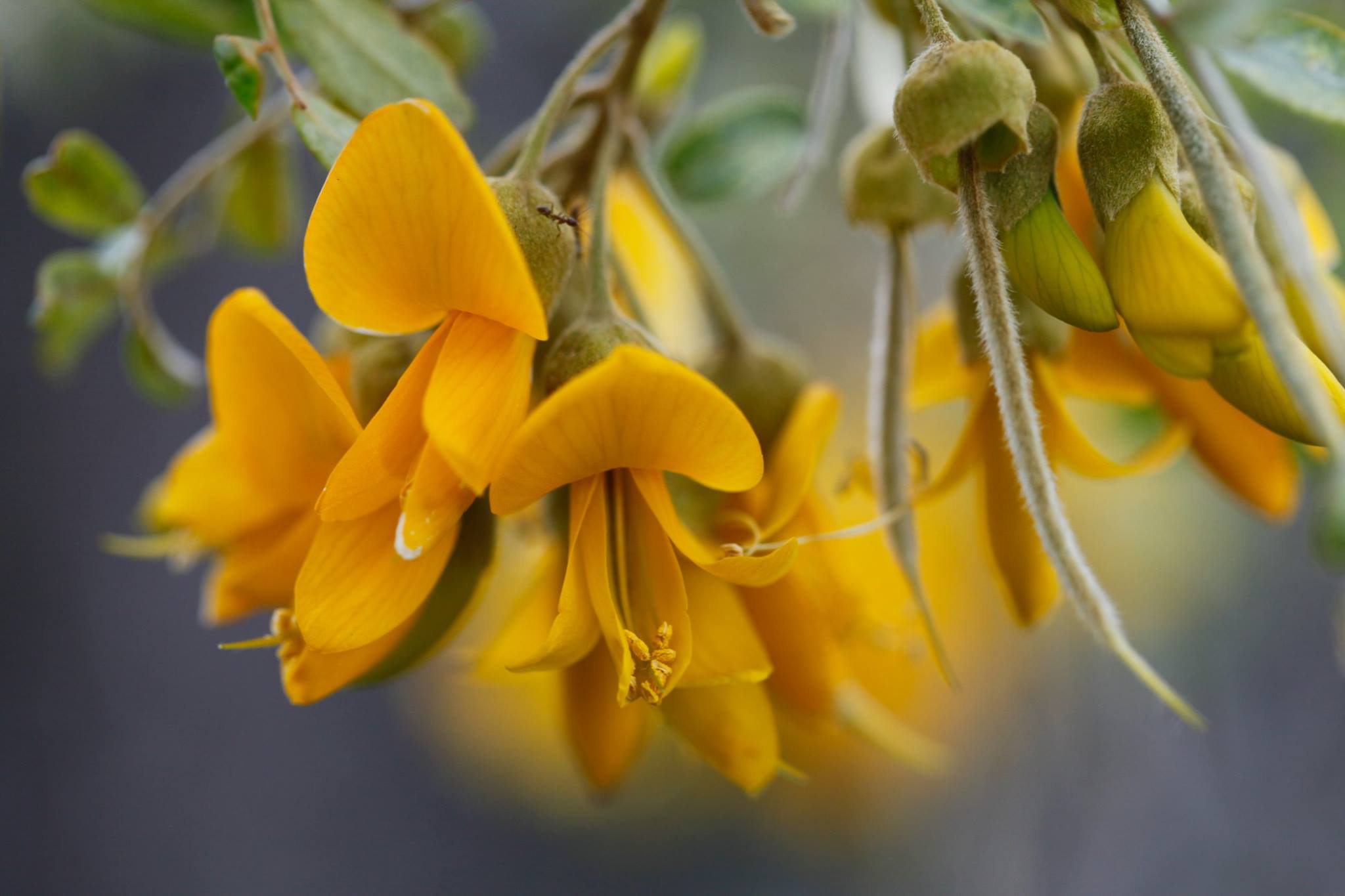This beautiful representative of the Fabaceae (Legume) family is endemic to Hawai‘i, meaning that it is found nowhere else in the world! Māmane is a shrub to medium sized tree which can reach mature heights of up to 50’ with spreads of up to 20’. The compound leaves are a deep green, consisting of 6-10 pairs of leaflets, often a lighter color on the underside and occasionally covered in light, golden-brown hairs. Flowers emerge as bright yellow clusters along racemes at the ends of branches. Blooming can be sporadic and varies from site to site. Winged fruits emerge green and quickly change to brown as they mature. The thick woody pods constrict between the seeds, and often remain on the tree throughout the year. Once opened, the fruit reveal a brightly colored orange seed which can often be seen littering the ground around mature trees.
In the landscape setting, māmane make for great screening, hedge, or specimen plants. They are both drought and wind tolerant and can be grown in full to partial shade. They have poor tolerance to salt spray, and do not thrive in coastal areas with clay to coral type soils. The seeds can be scarified with nail clippers and soaked in water for 24 hours to increase germination rates.
Māmane is a very important tree to the ecology of one of Hawai‘i’s most beloved bird species, the palila (Loxioides bailleui). This endangered honeycreeper feeds upon the leaf buds, flowers, and especially the green seed pods of the māmane. Now restricted to the high elevation māmane/naio (Myoporum sandwicense) forests of Mauna Kea on Hawai‘i Island, the historic range of palila extended to Mauna Loa, Hualālai and even the islands of O‘ahu and Kaua‘i. The strong wood of the māmane trees were widely used in traditional Hawai‘i, being used in housing construction, ō‘ō digging sticks, and as sled runners in the sport of hōlua. The flowers and seeds have also been used in lei.
Resources:
- http://nativeplants.hawaii.edu/plant/view/Sophora_chrysophylla
- http://www2.hawaii.edu/~eherring/hawnprop/sop-chry.htm
- Wagner, Warren L., Derral R. Herbst, and S. H. Sohmer. Manual of the Flowering Plants of Hawaii. Honolulu, HI: University of Hawaii Press, 1999.


